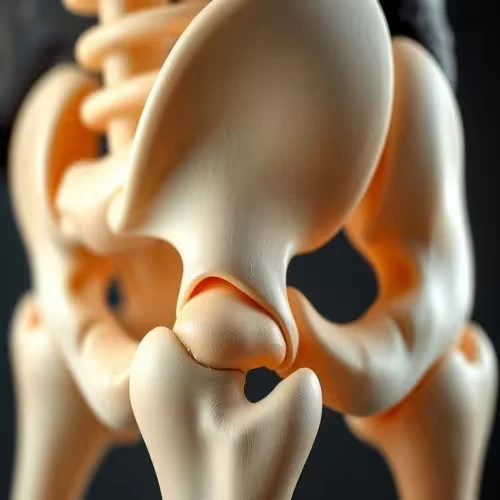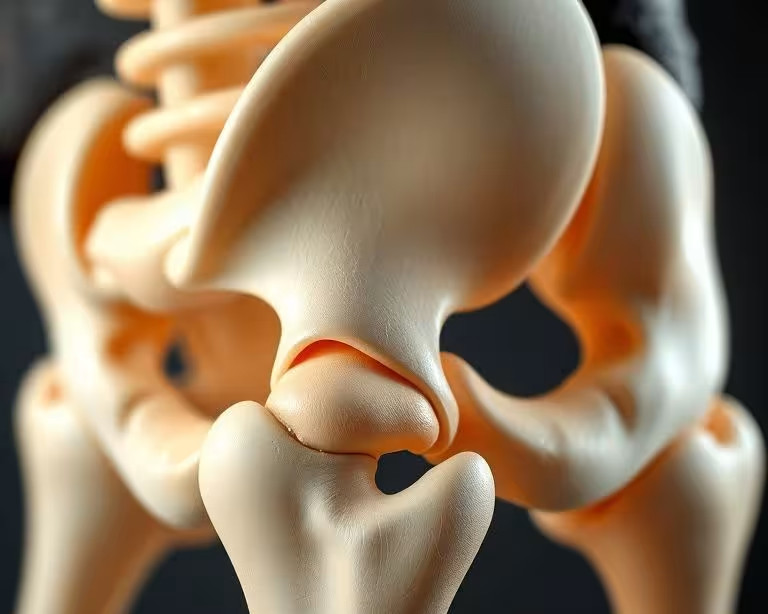Preventative Joint Care for Aging Dogs: A Comprehensive Guide to Lifelong Canine Mobility

As our beloved canine companions enter their senior years, the joy they bring into our lives often comes with an increased responsibility to support their changing health needs. One of the most common challenges aging dogs face is joint degradation, which can lead to discomfort, reduced mobility, and a significant impact on their quality of life. While many focus on managing existing joint conditions, the true power lies in preventative joint care for aging dogs. By implementing proactive strategies, we can help our furry friends maintain their agility, reduce pain, and enjoy a fulfilling, active life well into their golden years.
This comprehensive guide delves into the essential components of preventative joint care, from understanding canine joint anatomy to choosing the right supplements and implementing lifestyle adjustments. We'll explore the latest insights and provide data-driven recommendations to help you make informed decisions, ensuring your senior dog receives the best possible care.
Understanding Canine Joint Health and Degeneration
To effectively implement preventative measures, it's crucial to understand how canine joints function and what causes their decline.
The Anatomy of a Healthy Canine Joint
A dog's joint is a marvel of natural engineering, designed for flexibility, strength, and shock absorption. It consists of two or more bones meeting, capped with smooth articular cartilage that allows for frictionless movement. This cartilage is nourished by synovial fluid, a viscous liquid that acts as a lubricant and shock absorber, contained within the joint capsule. Ligaments and tendons provide stability, connecting bones to bones and muscles to bones, respectively.

In a healthy joint, this system works seamlessly, allowing your dog to run, jump, and play without pain. Preventative care aims to preserve the integrity of these components.
Common Joint Conditions in Aging Dogs
While many conditions can affect canine joints, some are particularly prevalent in older dogs:
- Osteoarthritis (Degenerative Joint Disease): The most common joint affliction, osteoarthritis involves the progressive breakdown of articular cartilage. As cartilage erodes, bones rub against each other, leading to pain, inflammation, stiffness, and the formation of bone spurs (osteophytes). It can affect any joint but is often seen in hips, knees, elbows, and the spine.
- Hip Dysplasia: An inherited condition where the hip joint doesn't develop properly, resulting in a loose fit between the ball and socket. This instability causes friction, pain, and eventually leads to secondary osteoarthritis. While often diagnosed early, its degenerative effects worsen with age.
- Elbow Dysplasia: Similar to hip dysplasia, this is a complex genetic condition affecting the elbow joint, often leading to pain and lameness as the dog ages.
- Cranial Cruciate Ligament (CCL) Tears: While an acute injury, aging and chronic stress on the knee joint can predispose dogs to partial or complete CCL tears, which can lead to significant instability and progressive arthritis if not managed.
Recognizing the Early Signs of Joint Discomfort in Senior Dogs
Early detection is paramount in preventative care. Dogs are masters at hiding pain, so keen observation is key:
- Subtle Changes in Gait: A slight limp, stiffness after resting, or favoring a limb.
- Difficulty with Movement: Hesitation to jump into the car, climb stairs, or get up from a lying position.
- Reduced Activity Levels: Less enthusiasm for walks, playing, or formerly favorite activities.
- Behavioral Changes: Irritability, reluctance to be petted, increased licking of affected joints, or withdrawal.
- Muscle Atrophy: Noticeable thinning of muscles in the hindquarters or limbs due to disuse.
Proactive Strategies for Preventative Joint Care
True preventative care for aging dogs is a multi-faceted approach, combining nutrition, supplementation, exercise, and environmental adjustments.
Nutritional Foundations: Diet and Weight Management
One of the most impactful preventative measures is maintaining your dog's ideal weight. Excess weight places enormous stress on joints, exacerbating degeneration and pain. A balanced diet tailored to your dog's age, breed, and activity level is crucial.
For aging dogs, look for formulations that support joint health, often containing specific nutrients. Below is an illustrative comparison of popular senior/joint-support dog food brands. Please note that specific nutritional profiles can vary by product line and formulation, and pet owners should always consult current product labels and their veterinarian.
Illustrative Comparison of Popular Senior/Joint-Support Dog Food Brands
| Brand & Formula (Example) | Protein % | Fat % | Fiber % | Key Joint Ingredients | Illustrative Price/lb | Pros | Cons |
|---|---|---|---|---|---|---|---|
| Purina Pro Plan Adult 7+ Bright Mind Chicken & Rice | 29% | 14% | 4% | Fish Meal (natural Glucosamine), EPA, DHA | $2.20 - $2.80 | Widely available, often vet-recommended, includes brain-supporting nutrients, specific joint support. | Contains by-product meal, not grain-free (if preferred). |
| Hill's Science Diet Adult 7+ Senior Vitality Chicken & Vegetable | 21% | 13% | 3% | Flaxseed (Omega-3s), L-Carnitine, Glucosamine, Chondroitin | $2.50 - $3.20 | Formulated for senior vitality, high-quality ingredients, includes specific joint and cognitive support. | Higher price point, lower protein percentage compared to some premium brands. |
| Royal Canin Size Health Nutrition Maxi Aging 8+ Dry | 26% | 15% | 3.5% | Fish Oil (Omega-3s), Glucosamine, Chondroitin | $2.80 - $3.50 | Breed/size specific formulas, often vet-recommended, targeted nutrients for aging large dogs. | Contains corn and by-product meal, premium price. |
| Blue Buffalo Life Protection Senior Chicken & Brown Rice | 20% | 10% | 6% | Flaxseed, Glucosamine, Chondroitin | $2.00 - $2.70 | Real meat first ingredient, no by-product meals, 'LifeSource Bits' with antioxidants, good fiber. | Lower fat content might not be ideal for all seniors, contains grains. |
| Orijen Senior Dry Dog Food | 38% | 15% | 8% | Naturally derived Glucosamine & Chondroitin from extensive fresh/raw meats | $4.00 - $5.00+ | High protein, grain-free, biologically appropriate, naturally rich in joint nutrients, premium ingredients. | Very high price point, intense nutrient profile might not suit all sensitive seniors. |
The Power of Targeted Joint Supplements for Dogs
Beyond specialized diets, joint supplements can play a vital role in preventative care, providing concentrated nutrients to support joint health before significant degradation occurs.
Glucosamine and Chondroitin: The Cartilage Builders
These are the foundational components of most joint supplements. Glucosamine helps stimulate the production of proteoglycans and collagen, essential building blocks for cartilage. Chondroitin works synergistically, helping to inhibit enzymes that break down cartilage and maintaining its elasticity and shock-absorbing properties. Consistent supplementation can support the long-term health of your dog's joint cartilage.
Omega-3 Fatty Acids (Fish Oil): Natural Anti-Inflammatories
EPA (eicosapentaenoic acid) and DHA (docosahexaenoic acid), primarily found in fish oil, are powerful natural anti-inflammatory agents. They work by modulating the body's inflammatory response, reducing the pain and swelling associated with joint stress. Regular intake can significantly reduce the risk of chronic inflammation contributing to joint degeneration.
MSM & Turmeric: Pain Relief and Antioxidant Support
MSM (methylsulfonylmethane) is an organic sulfur compound known for its anti-inflammatory and pain-relieving properties. It supports healthy connective tissue and can aid in reducing muscle spasms. Turmeric, specifically its active compound curcumin, is a potent antioxidant and anti-inflammatory. It helps protect joint cells from oxidative damage and can reduce discomfort.
Hyaluronic Acid & Collagen: Lubrication and Structural Integrity
Hyaluronic acid is a key component of synovial fluid, enhancing joint lubrication and shock absorption. Collagen, particularly Type II, is the primary structural protein in cartilage, tendons, and ligaments. Supplementing with these can help maintain the smooth function and structural integrity of joints.
Green-Lipped Mussel (GLM) & Undenatured Type II Collagen (UC-II): Advanced Joint Support
GLM, sourced from New Zealand, is a super-ingredient containing a rich blend of omega-3s, glucosamine, chondroitin, vitamins, and minerals. It offers comprehensive joint support. UC-II is a unique form of collagen that works differently, helping the immune system differentiate between healthy cartilage and damaged cartilage, potentially preventing further auto-immune breakdown.
Choosing the Right Supplement: Veterinarian Consultation & Quality Standards
Always consult your veterinarian before starting any supplement regimen. They can assess your dog's specific needs, rule out underlying conditions, and advise on appropriate dosages. Look for supplements from reputable brands that adhere to Good Manufacturing Practices (GMP) and, ideally, are members of the National Animal Supplement Council (NASC) for verified quality and purity.
Tailored Exercise Regimes for Senior Canines
Regular, appropriate exercise is vital for maintaining muscle strength, joint flexibility, and healthy body weight, all critical for preventative joint care.
Low-Impact Activities: Swimming, Short Walks
High-impact activities should be minimized or avoided as dogs age. Instead, focus on low-impact exercises that support muscle development without stressing joints. Swimming is an excellent example, providing full-body exercise with minimal joint impact.

Short, frequent walks on soft surfaces (grass, dirt trails) are preferable to long, strenuous hikes on pavement. The goal is consistent, gentle movement.
Maintaining Muscle Strength and Flexibility
Strong muscles surrounding the joints provide natural support and stability. Gentle range-of-motion exercises, passive stretching (under vet guidance), and controlled leash walks can help maintain muscle tone and flexibility. Avoiding sudden, jerky movements and repetitive high jumps is also important.
Avoiding High-Impact Stress
Activities like chasing frisbees, vigorous ball fetching, or agility training should be scaled back or modified. While a Great Dane puppy might joyfully leap, older dogs, even those that appear healthy, benefit from a more measured approach to exercise to prevent undue stress on their aging joints.

Environmental Modifications for Joint Comfort
Your dog's living environment can significantly impact their joint health and comfort.
Orthopedic Beds & Supportive Bedding
A soft, supportive orthopedic bed is a cornerstone of preventative care for aging dogs. It cushions joints, reduces pressure points, and promotes better sleep, allowing muscles and joints to rest and recover. Avoid hard, cold surfaces for resting.

Ramps, Non-Slip Flooring, and Accessibility Aids
Making your home more accessible can prevent injuries and reduce daily strain. Provide ramps for getting into cars or onto furniture. Use non-slip mats or rugs on slick surfaces like hardwood or tile floors to prevent slips and falls that can cause serious joint damage. Raised food and water bowls can also alleviate neck and shoulder strain.
Temperature Control
Cold, damp environments can exacerbate joint stiffness and discomfort. Ensure your senior dog has a warm, draft-free place to rest, especially during colder months.
Beyond Prevention: Advanced Therapies and Monitoring
Even with the best preventative care, some dogs may eventually require additional support. Knowing about advanced therapies and consistent monitoring is part of a holistic, long-term approach.
The Role of Canine Physical Therapy and Hydrotherapy
If your veterinarian identifies early signs of joint issues, physical therapy can be immensely beneficial. It encompasses various techniques, including therapeutic exercises, massage, laser therapy, and hydrotherapy. Hydrotherapy, in particular, uses the buoyancy of water to reduce weight-bearing stress on joints while allowing for muscle strengthening and improved range of motion.

When to Consult Your Veterinarian: Regular Check-ups and Early Intervention
Regular veterinary check-ups are non-negotiable for aging dogs. Your vet can perform comprehensive orthopedic exams, recommend diagnostic imaging (X-rays) if needed, and offer medical interventions like anti-inflammatory medications or disease-modifying osteoarthritis drugs (DMOADs) if preventative measures alone are insufficient. Early intervention can significantly slow the progression of joint disease.
Monitoring Progress and Adapting Care Plans
Consistency is key, but so is adaptability. Continuously monitor your dog's mobility, comfort levels, and overall behavior. Keep a journal of their good and bad days. Discuss any changes with your veterinarian, who can help adjust their diet, supplement regimen, exercise plan, or introduce new therapies as needed. What works today might need slight adjustments tomorrow.
Frequently Asked Questions (FAQ) about Preventative Joint Care
How early should I start preventative joint care for my dog?
It's never too early to start thinking about joint health! For large and giant breeds, or breeds genetically predisposed to joint conditions (like German Shepherds, Labradors, Golden Retrievers), proactive measures can begin as early as puppyhood with proper nutrition and controlled exercise. For all other dogs, starting around 5-7 years of age, or when they enter their senior phase, is an excellent time to implement a preventative joint care regimen.
Are there specific breeds prone to joint issues that need earlier intervention?
Absolutely. Breeds commonly affected by conditions like hip and elbow dysplasia include German Shepherds, Labrador Retrievers, Golden Retrievers, Rottweilers, Great Danes, and Bernese Mountain Dogs. These breeds often benefit from a head start on joint-supporting diets and supplements, as well as careful monitoring of their growth and exercise during puppyhood to minimize stress on developing joints.
Can a puppy's diet impact joint health in old age?
Yes, significantly! Rapid growth in large and giant breed puppies due to overfeeding or diets too high in calories and calcium can contribute to developmental orthopedic diseases like hip dysplasia and osteochondritis dissecans (OCD). Feeding a high-quality, large breed puppy formula that supports slow, controlled growth is a crucial preventative step that impacts lifelong joint health.
What's the difference between joint supplements and pain medication?
Joint supplements, like glucosamine and chondroitin, are nutraceuticals designed to support joint structure, reduce inflammation, and slow cartilage degradation over time. They are preventative and supportive. Pain medications (e.g., NSAIDs) are pharmaceuticals prescribed by a vet to quickly alleviate pain and inflammation in dogs already experiencing discomfort. Supplements work to maintain health, while pain medications treat symptoms. Both can be used together under veterinary guidance.
How long does it take for joint supplements to show results?
The timeline for results from joint supplements can vary greatly depending on the dog's individual condition, the severity of any existing issues, and the specific supplement ingredients. Generally, it can take anywhere from 4 to 12 weeks of consistent use to observe noticeable improvements in mobility, comfort, and activity levels. Patience and consistency are key.
Are there any side effects of joint supplements?
Most joint supplements are generally considered safe with minimal side effects, especially when administered at recommended dosages. The most common mild side effects might include digestive upset (like diarrhea or vomiting), particularly when starting a new supplement. Rarely, allergic reactions can occur. Always introduce new supplements gradually and consult your veterinarian if you observe any adverse reactions or have concerns.
Conclusion
Preventative joint care for aging dogs is not merely about managing symptoms; it's about investing in their long-term health and happiness. By adopting a comprehensive strategy that includes a tailored diet, appropriate supplementation, carefully managed exercise, and thoughtful environmental adjustments, you can significantly enhance your senior dog's quality of life.
Remember, your veterinarian is your most valuable partner in this journey. Regular check-ups and open communication ensure that your dog's care plan evolves with their needs, allowing them to remain active, comfortable, and a cherished member of your family for many more years to come.

 By
By
No comments yet. Be the first!